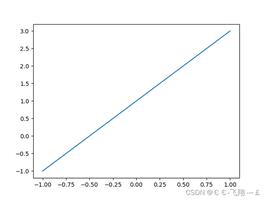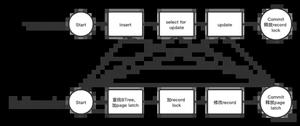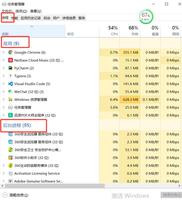Python装饰器原理与用法分析
本文实例讲述了Python装饰器原理与用法。分享给大家供大家参考,具体如下:
1、装饰器的本质是函数,主要用来装饰其他函数,也就是为其他函数添加附加功能
2、装饰器的原则:
(1) 装饰器不能修改被装饰的函数的源代码
(2) 装饰器不能修改被装饰的函数的调用方式
3、实现装饰器的知识储备
(1) Python中函数即‘变量'
a、变量在Python中的存储
x='Tomwenxing'
y=x
[说明]:
当Python解释器遇到语句x='Tomwenxing'时,它主要完成了两样工作:
1.在内存中开辟了一片空间用来存储字符串‘Tomwenxing'
2.在内存从创建了一个名为x的变量,并用它指向字符串‘Tomwenxing'所占据的内存空间(可以理解为房间和房间号的关系)
而语句y=x意为将变量x对字符串的引用赋值给变量y,即在内存中创建一个变量y,并使其指向变量x所指向的内存空间
b、函数在Python中的存储
def test():
pass
[说明]:
在Python中,函数的存储和变量相似,以上面的函数为例,Python解释其主要做两件事:
1.在内存中开辟一个内存空间,用来存储函数代码的字符串(本例中代码只有一句:pass)
2.在内存中创建一个变量test,用来指向存储函数代码字符串的内存空间(相当于test=‘函数体')
因此说在Python中函数即变量
(2) 高阶函数(下面两个条件满足任何一个即为高阶函数)
a、把一个函数名当做实参传递给另外一个函数
[对装饰器的影响]:达到“在不修改被装饰函数源代码的情况下为其添加功能”的效果
import time
def bar():
time.sleep(2)
print('in the bar')
def test(func):
start_time=time.time()
func()
stop_time=time.time()
print('函数的运行时间为:',stop_time-start_time)
test(bar)
运行结果:
in the bar
函数的运行时间为: 2.0021145343780518
b、返回值中包含函数名
[对装饰器的影响]:达到“不改变函数的调用方式“的效果
import time
def bar():
time.sleep(3)
print('in the bar')
def test2(func):
print('新添加的功能')
return func
bar=test2(bar)
bar()
运行结果:
新添加的功能
in the bar
(3) 嵌套函数:在一个函数体内用def去声明一个新的函数(不是调用)
def foo():
print('in the foo')
def bar(): #声明一个新的函数,而不是调用函数
print('in the bar')
bar()
foo()
运行结果:
in the foo
in the bar
4、装饰器的语法:高阶函数+嵌套函数=》装饰器 (下面的例子可以用pycharm的调试器调试一下,看看代码的运行顺序)
import time
def timer(func):
def deco(*args,**kwargs):#使用了不定参数
start_time=time.time()
res=func(*args,**kwargs) #运行函数
stop_time=time.time()
print('运行时间:',stop_time-start_time)
return res # 若无返回值,则返回None
return deco
@timer #等价于test1=timer(test1)=deco,即test1()=deco()
def test1():
time.sleep(3)
print('in the test1')
@timer #等价于test2=timer(test2)=deco,即test2(name)=deco(name)
def test2(name):
time.sleep(3)
print('in the test2',name)
test1()
print('-------------分界线------------------------')
test2('Tomwenxing')
运行结果:
in the test1
运行时间: 3.0001718997955322
-------------分界线------------------------
in the test2 Tomwenxing
运行时间: 3.000171422958374
5、带参数的装饰器
# -*- coding:utf-8 -*-
user,passwd='Tomwenxing','123'
#如装饰器带参数,一般是三层嵌套
def auth(auth_type): #第一层的参数是装饰器的参数
def outer_wrapper(func):#第二层的参数是装饰器要装饰的目标函数
def wrapper(*args,**kwargs):#第三次的参数是目标函数的参数
if auth_type=='local':
username = input('Username:').strip()
password = input('Password:').strip()
if user == username and passwd == password:
print('用户Tomwenxing已经成功登录!')
res = func(*args, **kwargs) #运行目标函数
return res
else:
exit('用户名或密码有错误')
elif auth_type=='ldap':
print('暂不支持这种登录方式!')
return wrapper
return outer_wrapper
def index():
print('欢迎来到index页面')
@auth(auth_type='local') #home=wrapper()
def home(name):
print('%s,欢迎来到home页面' %name)
return 'This is home page'
@auth(auth_type='ldap')
def bbs():
print('欢迎来到bbs页面 ')
index()
print('----------------------分界线-------------------')
print('函数的返回值为:',home('wenxing'))
print('----------------------分界线-------------------')
bbs()
运行结果:
欢迎来到index页面
----------------------分界线-------------------
Username:Tomwenxing
Password:123
用户Tomwenxing已经成功登录!
wenxing,欢迎来到home页面
函数的返回值为: This is home page
----------------------分界线-------------------
暂不支持这种登录方式!
更多关于Python相关内容感兴趣的读者可查看本站专题:《Python数据结构与算法教程》、《Python加密解密算法与技巧总结》、《Python编码操作技巧总结》、《Python函数使用技巧总结》、《Python字符串操作技巧汇总》及《Python入门与进阶经典教程》
希望本文所述对大家Python程序设计有所帮助。
以上是 Python装饰器原理与用法分析 的全部内容, 来源链接: utcz.com/z/319155.html





